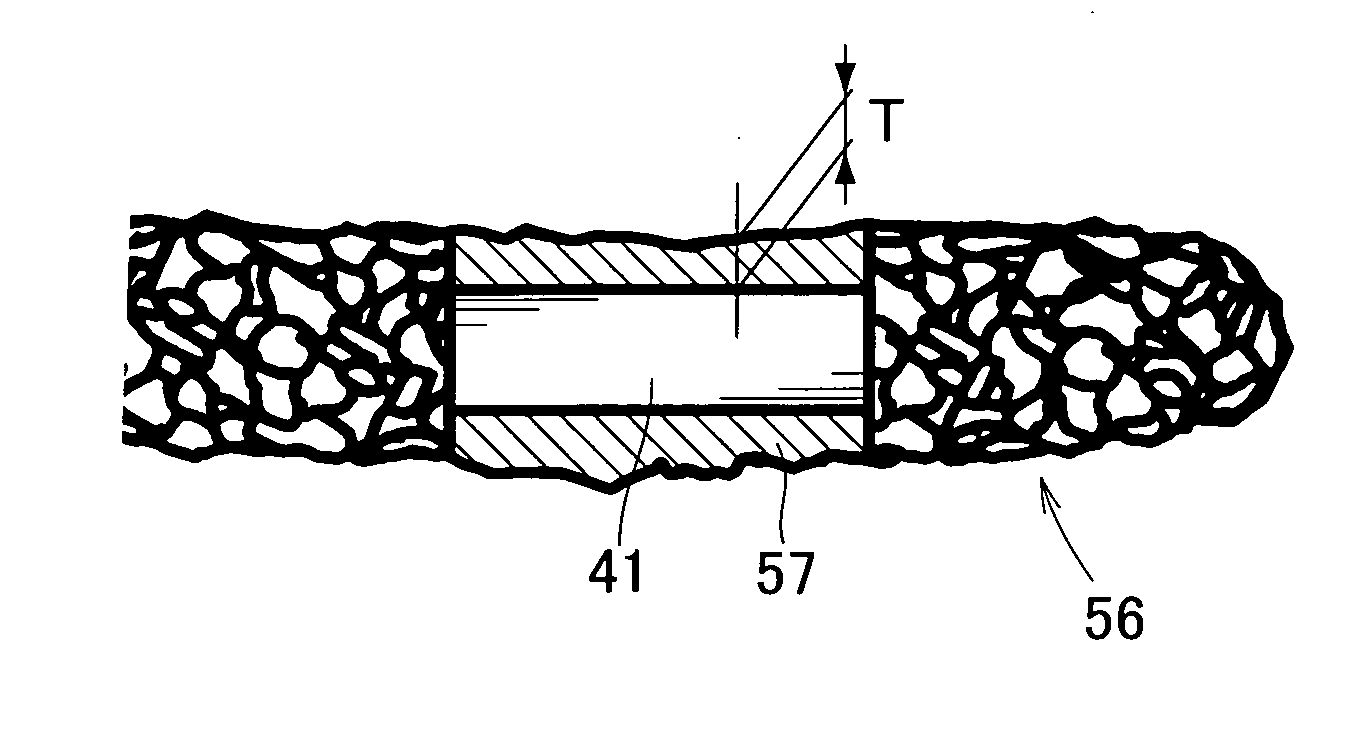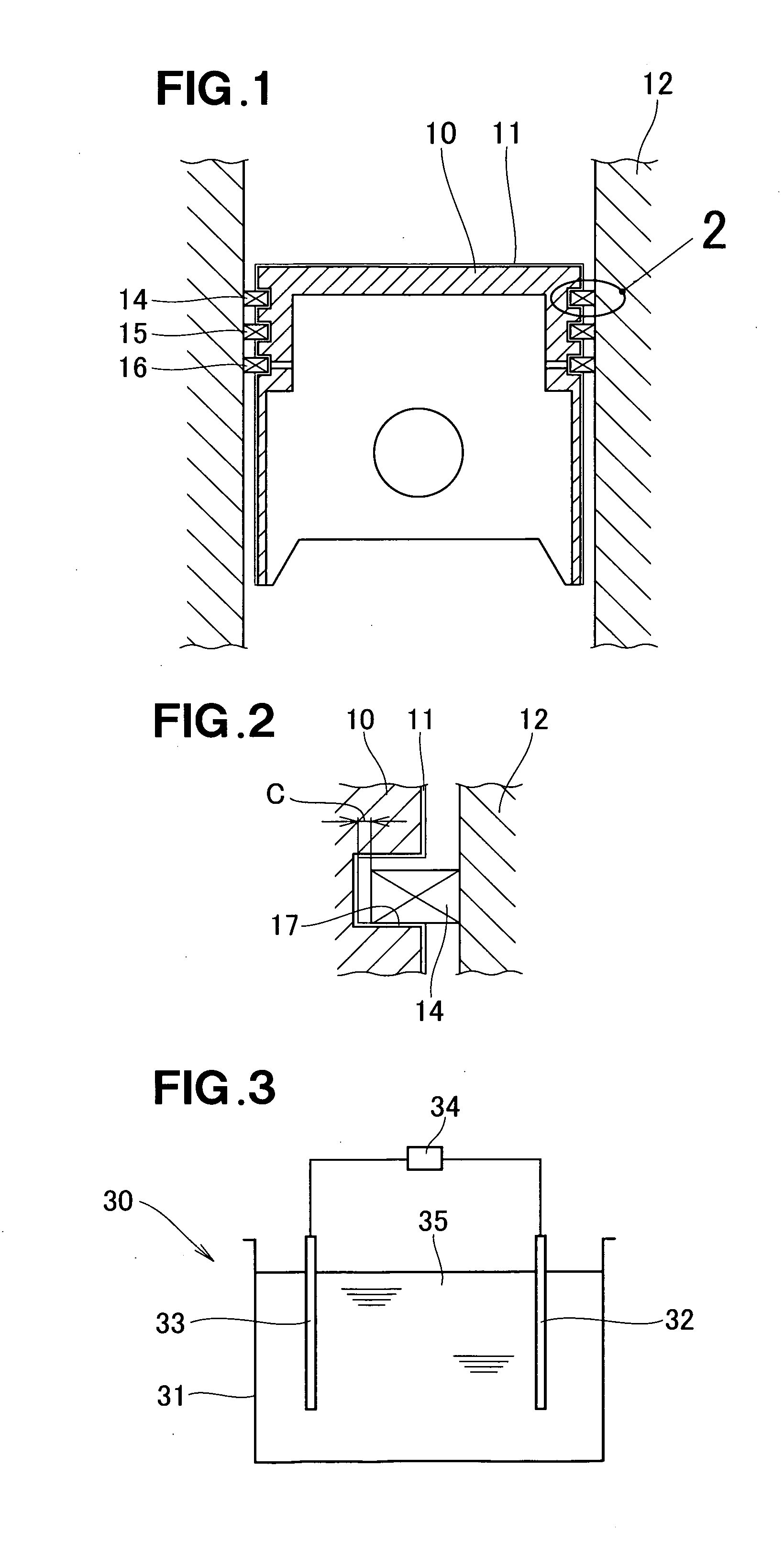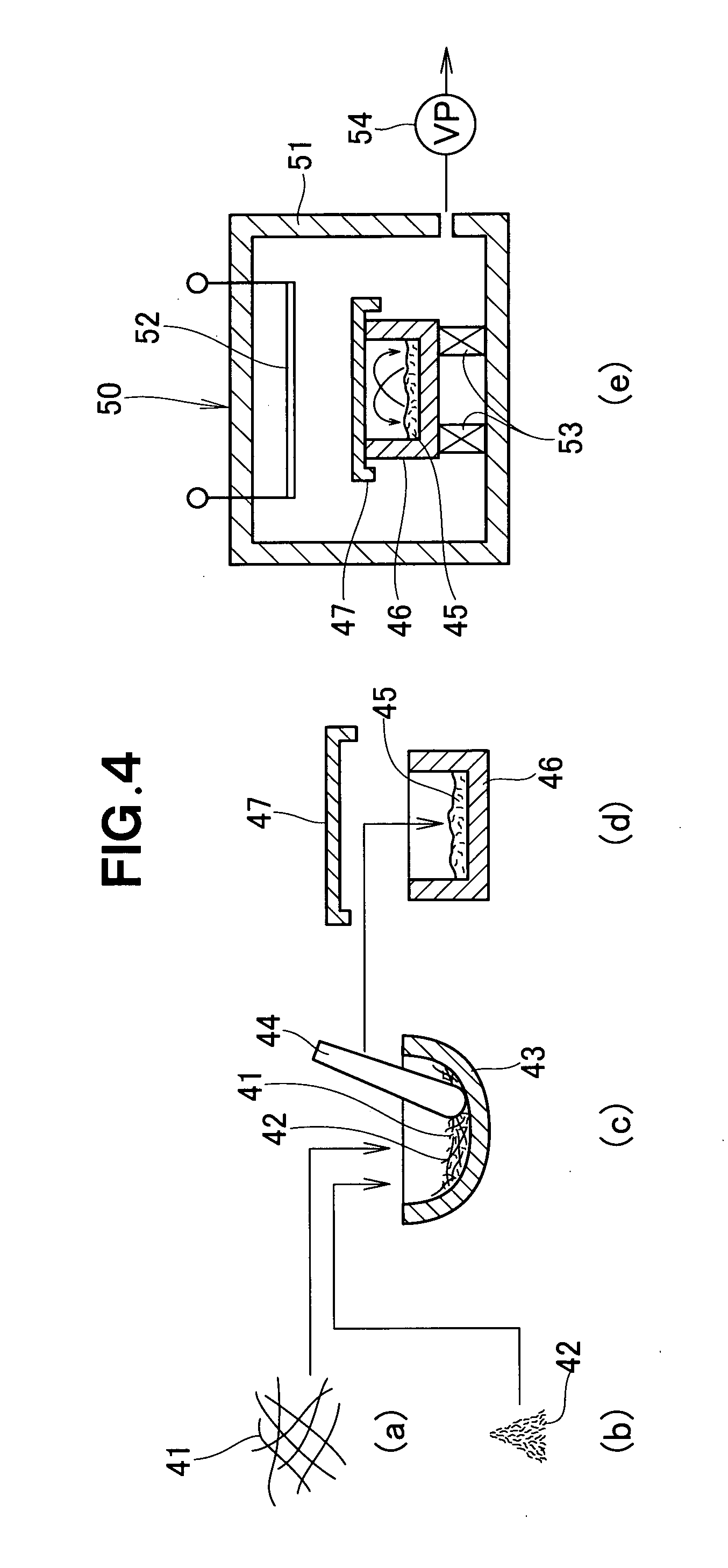Plated aluminum product
- Summary
- Abstract
- Description
- Claims
- Application Information
AI Technical Summary
Benefits of technology
Problems solved by technology
Method used
Image
Examples
experiment 1
[0068]conducted on sample A (iron plating layer not containing CNF). The coefficient of kinetic friction was 0.50, the wear mark depth was 0.92 μm, and the surface roughness was 0.084 μm.
[0069]Experiments 2, 3, and 4 were conducted on samples B, C, and D, which have an iron-based composite plating layer containing CNFs, and the coefficients of friction, depths of wear marks, and surface roughness shown on Table 2 were obtained.
[0070]Experiments 5, 6, and 7 were conducted on samples E, F, and G, which have an iron-based composite plating layer containing particle-deposited CNFs, and the coefficients of friction, depths of wear marks, and surface roughness shown on Table 2 were obtained.
[0071]Experiments 8, 9, and 10 were conducted on samples H, I, and J, which have an iron-based composite plating layer containing CNFs, and the coefficients of friction, depths of wear marks, and surface roughness shown on Table 2 were obtained.
[0072]Next, correlations between the proportion in which t...
PUM
| Property | Measurement | Unit |
|---|---|---|
| Temperature | aaaaa | aaaaa |
| Temperature | aaaaa | aaaaa |
| Time | aaaaa | aaaaa |
Abstract
Description
Claims
Application Information
 Login to View More
Login to View More - R&D
- Intellectual Property
- Life Sciences
- Materials
- Tech Scout
- Unparalleled Data Quality
- Higher Quality Content
- 60% Fewer Hallucinations
Browse by: Latest US Patents, China's latest patents, Technical Efficacy Thesaurus, Application Domain, Technology Topic, Popular Technical Reports.
© 2025 PatSnap. All rights reserved.Legal|Privacy policy|Modern Slavery Act Transparency Statement|Sitemap|About US| Contact US: help@patsnap.com



